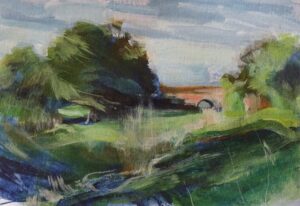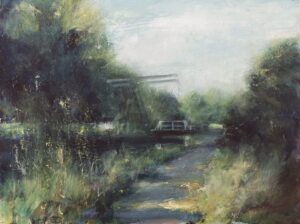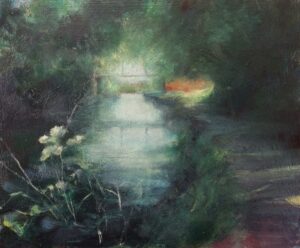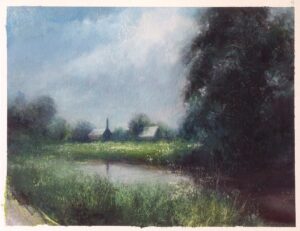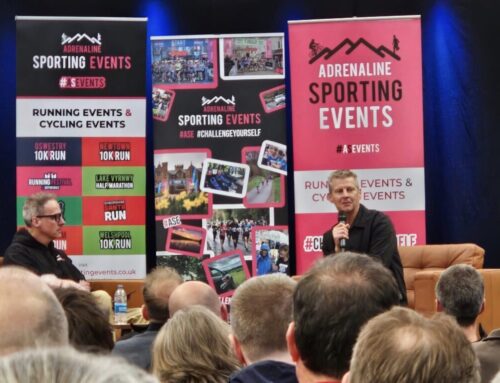Local artist David Bannister wanders our local waterways
My acquaintance with canals in the rural landscape was embedded at an early age with regular family outings, in all weathers, to the local canals and byways of Warwickshire. As a child, I disliked being dragged out on such expeditions; however, they must have resonated on a deeper, subliminal level as I recently found myself donning walking shoes and setting out from my home near Oswestry to seek out local towpath walks and discover interesting pieces of local history along the way. Thus, an idea began to emerge – I would record my experiences in pen and paint along the towpaths scribed by the waterways that cut through Shropshire and neighbouring Welsh borderland.
My starting point was the section of canal from Llanymynech to Lower Frankton and the junction with the Llangollen Canal. With sketchbook and camera, I therefore set out to record sights and experiences on regular walks along this length of canal. I’d also look for routes where I could leave the towpath to explore tributary footpaths and bridleways leading to other places of interest. The intention is for the project to span all four seasons, beginning last summer. I am also jotting my thoughts and impressions as I continue along my way.
During the long, hot summer I enjoy the reflections of abundant vegetation along the canal banks and deep shade of overhanging trees. In the stillness of the humid air I smell decaying vegetation, sweet blossom, and sun-drenched crops. The air is filled with the excitation of insects and birds, the scattered silvery tufts of dandelion clocks, the fluttering of butterflies.
I catch the smell of diesel fumes from a passing narrowboat chugging along at 3 or 4 miles per hour. Once important for the transport of goods and a massive undertaking in their day, today our canals are mainly used for recreation. And the towpaths where horses plodded along pulling the unpowered barges are now dominated by walkers, cyclists, and anglers (while still the occasional horse).
From the level path I approach a gentle rise or fall where the canal needs to step up or down to maintain the level waters for navigation. I observe little hubs of activity as the lock keys are inserted and turned into the lock gate machinery.
Treading carefully over the narrow lock gates at Aston Locks, I explore the nature reserves with woodland and wildflower areas, ponds, hides and viewing platforms. The stillness of a satin-surfaced pond is broken by a swan landing, wings and large webbed feet outstretched, gliding to the water. I observe the love-heart greeting of its mate. The sudden appearance of a man dressed in shorts and floppy sunhat disturbs a heron on the fringes of the pond. With a startled screech and prehistoric silhouette, the bird exerts flight over the reeds to a more secreted location.
I think about the ingenuity of the engineers, the inventiveness of the locks, sluices, and overflows; of the backbreaking labour of the navvies who built the canals; of the work of the canal heritage volunteers who have energetically revived and made navigable the waterways and provided wonderful habitats for all kinds of flora and fauna. I note the uniqueness of each bridge. In tunnels the darkness blinds, and I take a firm grip of the handrail for support. Best to take a torch!
Throughout the coming months I will continue my exploration of the local waterway structure. Why not follow in my footsteps to enjoy a great mix of wildlife, architecture, and countryside. Better still, create your own artworks, inspired by the natural and manmade wonders of the canal.
Working predominantly in acrylics and oils but also exploring digital technology, David divides his talents between graphic art, representational landscapes, abstract works, and portraiture. He also teaches at all levels. For further information, visit www.davidbannisterart.com or Instagram @davidbannisterart.
